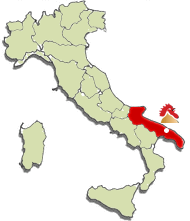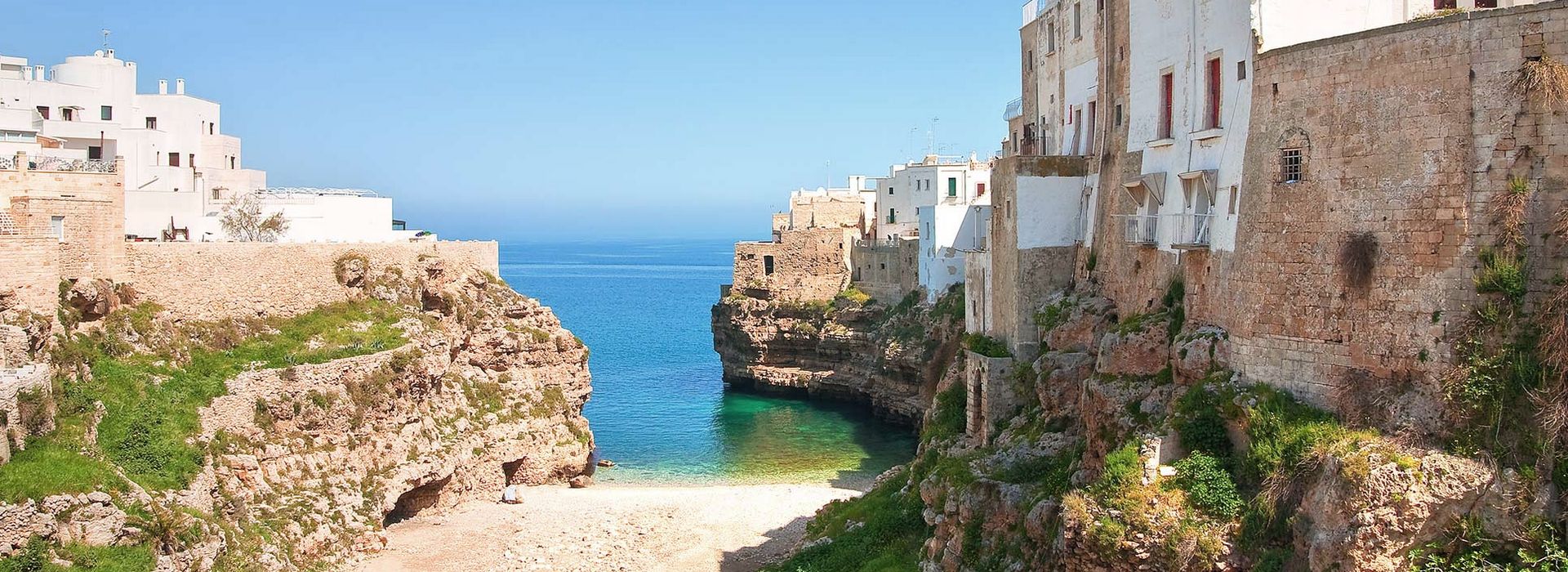Polignano a Mare is 30 km far from the Masseria Spetterrata farmhouse. Polignano is considered one of the most fascinating tourist resorts on the Adriatic coast.
It is believed that its name derives from the Greek Nea Polis (new city) which then turned into Polimnianum up to today’s Polignano; the suffix a Mare was added, one year after the unification of Italy, by Royal Decree in 1862; for which the name of the town became Polignano a Mare.
In the area, finds have been found that testify to human presence already in the Neolithic era.
The first settlements in the historic center date back to the second millennium BC, when Puglia was occupied by the Illyrian population of the Iapigi. In the 4th century B.C. Dionysius II, tyrant of Syracuse, for his easily defensible position, made it a landing and stopping point for maritime traffic. In the III century BC it first came under the influence of Taranto, with which it intertwined intense and flourishing commercial relations and subsequently was annexed to the territories of the Roman Republic. The history of Polignano a Mare since then followed the one of the whole of Puglia which passed through various Norman dominations with Frederick II of Swabia, Aragonese with the d’Agios, Venetian and Bourbon.
Its historic center is characterized first of all by its position on a 20-meter high cliff overlooking the sea. Walking through the ancient alleys surmounted by the typical houses built in local stone, you can admire the matrix Church of Santa Maria Assunta, overlooking Piazza Vittorio Emanuele, until you arrive to the characteristic balconies on the sea from which to peer breathtaking panoramas.
To visit also the hamlet of San Vito with the characteristic harbor and the Benedictine Abbey.
The pretty sandy coves on the coast, mostly rocky, the crystal clear waters of the sea that regularly receives the recognition of the blue flag, the sea caves that creep into the cliffs, make Polignano a Mare a highly appreciated destination for tourism lovers bathing.
There are countless restaurants and clubs in the historic center and on the coast, which mainly offer dishes and recipes typical of the Apulian maritime tradition. Do not miss the famous Polignano ice cream which is still produced with old artisanal methods.
 Masseria Spetterrata
Masseria SpetterrataAgriturismo - Restaurant
72016 Contrada Spetterrata
Montalbano di Fasano (BR)
Puglia - Italy
Tel. +39 328 2230951

Polignano a Mare |
Privacy© All rights reserved
Credits: basilicatanet.com


 Home
Home


 Sito Italiano
Sito Italiano